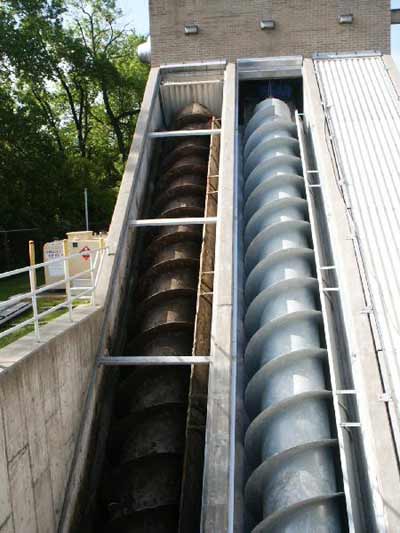Since water is continually recycled, the treatment of drinking water actually begins with the treatment of wastewater before it is returned to the environment. Wastewater treatment problems often make the news during times of flooding because overwhelmed water treatment plants are often forced to release untreated wastewater into rivers.
The Saginaw, Michigan wastewater treatment plant was challenged during a recent (Spring of 2013) flooding episode, but the plant managed to keep up with the high volume of storm water and release only properly treated water into the Saginaw River.
Here are the highlights of the Saginaw wastewater treatment process. Their system is typical of most excellent waste treatment facilities around the country. The treatment process has several steps:
- Sewage passes through a 1/4-inch bar screen, which removes sticks, leaves and other debris
- Water flows through grit collectors, where centrifugal force is used to seperate heavy solids from the water
- Water is routed to settling tanks, where floating material is skimmed off the top using rotating skim arms and heavier solids are allowed to settle to the bottom
- Wastewater is sent to aeration tanks, where oxygen is introduced to encourage microorganisms present in the tanks to metabolize dissolved organics into a form that can be separated through the settling process
- The water is routed into settling tanks that allow solids to settle to the bottom
- After settling tanks, water flows into chlorine tanks, where the chemical is added to kill any harmful organisms left
- Residual chlorine is removed by adding sulfur dioxide before the water is discharged into the river.
For a very basic explanation of the wastewater treatment process, check out this interactive graphic provided by the Water Environment Federation.
High quality wastewater treatment plants are carefully controlled, and testing is an essential part of the process. Here’s a rundown on the testing done at the Saginaw plant:
Analysis is done daily on water quality with tests for suspended solids, five-day biochemical oxygen demand, dissolved oxygen, fecal coliform, phosphorus, pH, ammonia nitrogen. Those analyses are required to ensure the plant is meeting limits set by the National Pollutant Discharge Elimination System permit issued to the facility by the Michigan Department of Environmental Quality and Environmental Protection Agency, which require regular reports.
In addition to required tests, lab staff also perform a series of tests on a bi-weekly basis to determine if the following industrial contaminants are contained in the water: cadmium, chromium, copper, cyanide, iron, lead, mercury, nickel, silver, zinc, phenol, oils, greases and poly-chlorinated bi-phenyls (PCBs).
Reference Source: MLive.com






